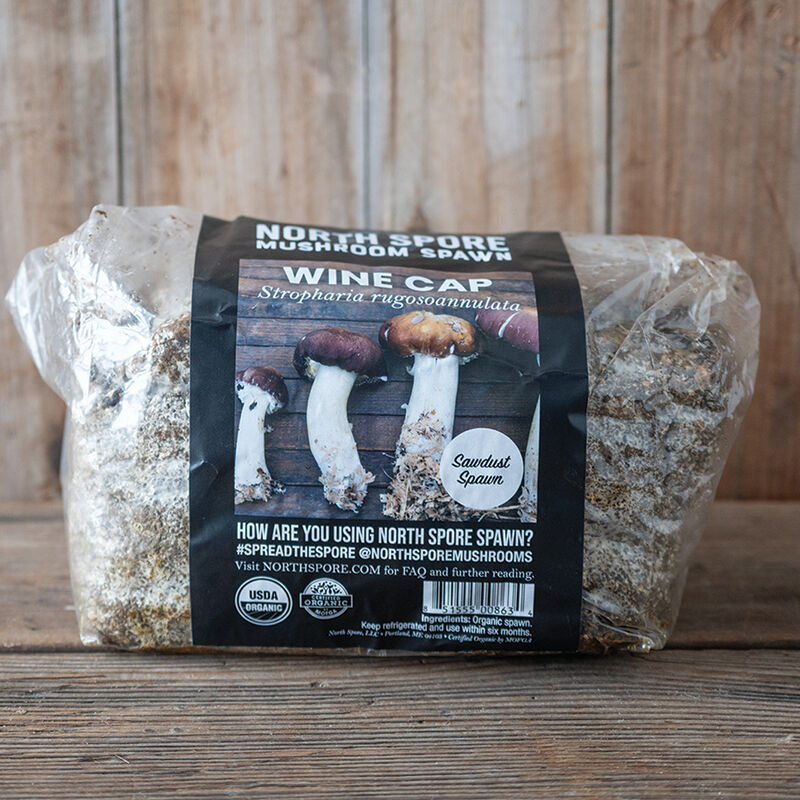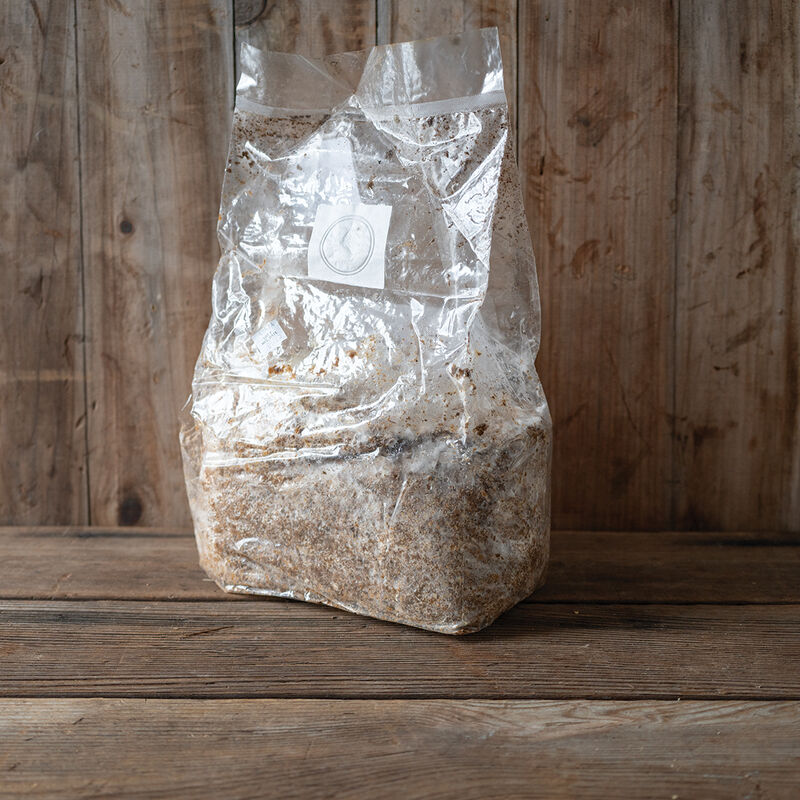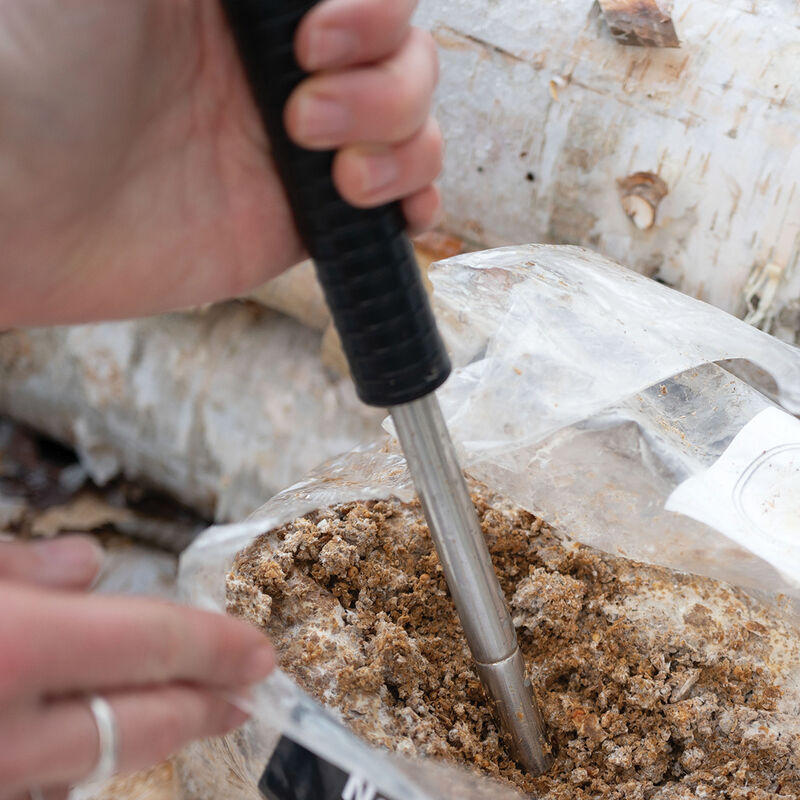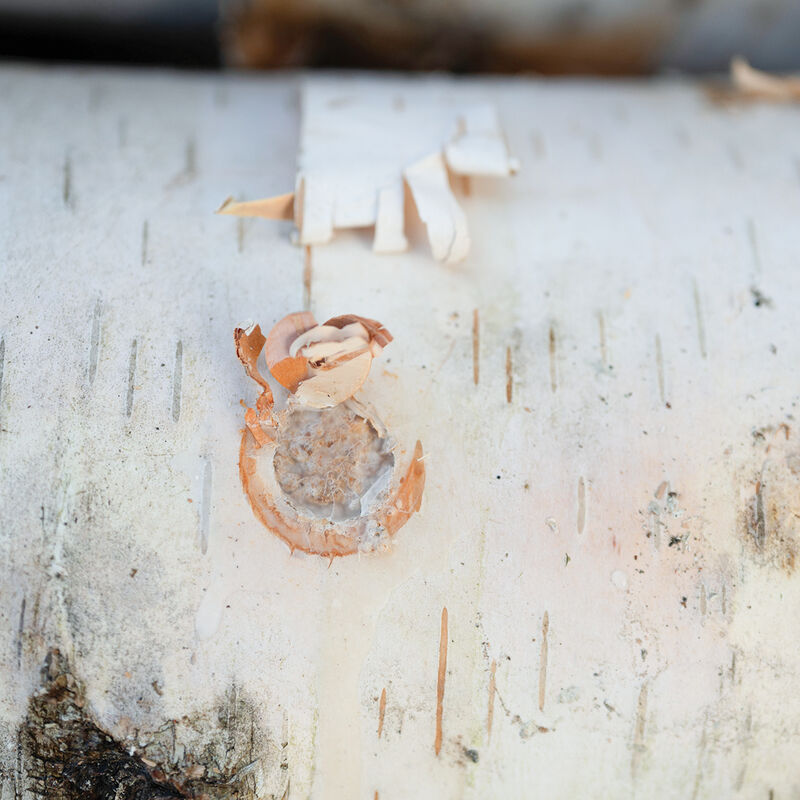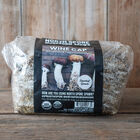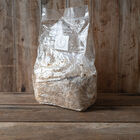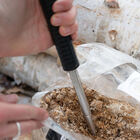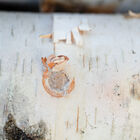Wine Cap Sawdust Spawn Organic Mushrooms
Wine Cap Sawdust Spawn Organic Mushrooms
A garden bed favorite.
Also known as the 'Garden Giant' for their impressive size, these mushrooms have an earthy taste similar to artichokes and potatoes. Ideal for both novice and seasoned chefs as their firm, meaty texture holds up well in various cooking methods, from sautéing and grilling to roasting and braising. Wine Cap mushrooms are an excellent choice for home gardeners and mushroom enthusiasts because of quick colonization rates and abundant harvests.Colonization Rate: Wine Caps are fast colonizers. Spring inoculated beds may fruit in 1–3 months, and containers in less time than that. Beds can produce infinitely, provided conditions are met for perennialization and adequate substrate is added yearly.Optimal Growing Conditions: Fruiting temperatures ranging from 50–70°F (10–21°C). Wine Caps grow dependably on hardwood wood chips such as Soft Maple, Poplar, Box Elder, and Magnolia. In some cases, they can tolerate up to 50% softwood and tend to perform better in beds with a diverse range of particle sizes, including a mix of sawdust and wood chips. It's advisable to avoid using large branches or pieces of wood as they take longer to colonize and may create excessive air space in the bed. See our chart: Substrate Types for Growing Mushrooms for more information.Usage Recommendation: Wine Cap sawdust spawn is only suitable for outdoor beds or top-fruiting containers.NOTE: This product is not a standalone mushroom grow kit. To induce fruiting, Wine Cap sawdust spawn must be combined with a substrate, such as straw (not hay), hardwood chips, or sawdust.Bag Weight: 5.5 lb. USDA Certified Organic.
- This product does not ship to Canada.
- This product does not ship to the following countries: United Arab Emirates, Austria, Australia, Barbados, Belgium, Bulgaria, Bermuda, Bahamas, Switzerland, Cyprus, Czech Republic, Germany, Denmark, Estonia, Spain, Finland, France, United Kingdom, Greece, Hong Kong, Croatia, Hungary, Ireland, Iceland, Italy, Japan, Republic of Korea, Kuwait, Cayman Islands, Lithuania, Luxembourg, Latvia, Malta, Netherlands, Norway, New Zealand, Oman, Poland, Portugal, Qatar, Romania, Saudi Arabia, Sweden, Singapore, Slovenia, Slovakia, San Marino, Thailand, Trinidad and Tobago, Taiwan, Ukraine.
- This product does not ship to the following states and jurisdictions: HI.
Mushroom sawdust spawn ships from March through May according to destination and climate.
CULTURE:
Use sawdust spawn to grow Wine Cap and Almond Agaricus mushrooms in beds or top-fruiting containers. Mushrooms require ample moisture. Choose a location for your production that is easy to access, monitor, and is at least partially shaded year-round. Easy access to a water source may also be beneficial. Wine Caps have a wide range of adaptability and are a good beginner species. Almond Agaricus is a heat-loving species. In areas where temperatures drop below 35°F (2°C), treat Almond Agaricus as an annual, as it will not survive cold temperatures. It should be inoculated only when average temperatures are at least 50°F (10°C) degrees, but ideally 70–80°F (21–27°C) degrees. The season can be extended with greenhouses or other season extension methods.SPAWN STORAGE:
Remove spawn bags from shipping box promptly. Untuck bags to expose the filter patch and increase airflow. Mushroom growth begins from mycelium (a vegetative structure made up of whitish or light brown fibers). In sawdust spawn bags, this can appear as fuzzy growth resembling mold, but not to worry; it is healthy growth. Wine Cap and Almond Agaricus spawn can be stored for a maximum of 6 months. It is recommended to store Wine Cap spawn in the refrigerator and Almond Agaricus at room temperature. Use spawn within one day of opening. Fresh spawn will have the best chance of success. Do not open the bag prior to the day of inoculation as it can heighten the risk of contamination and dry out the inoculant. Initial moisture is critical. DAYS TO MATURITY: Almond Agaricus and Wine Caps are fast colonizers: beds started in the spring may fruit in 1–3 months, and potentially faster in top-fruiting containers. Time to fruiting is subject to environmental conditions, substrate type, mushroom species, and the ratio of spawn to substrate. Fruiting happens only once mycelium has been fully established (colonized) in substrate. SUBSTRATE SELECTION: Wine Caps grow dependably on hardwood wood chips but in some cases can handle up to 50% softwood. Almond Agaricus prefers higher nitrogen, complex substrates like manure and compost. See our chart: Substrate Types for Growing Mushrooms for more information. Fresher wood chips carry a lower risk of contamination (pests, and other fungi) than wood chips that have been allowed to age. MUSHROOM BED INOCULATION: Wine Cap and Almond Agaricus mushrooms can be grown in outdoor beds, between garden rows, or anywhere there is ample compatible substrate. The volume that one bag of spawn can inoculate depends on bed depth and ratio of spawn to substrate, expect to inoculate roughly a 4' x 4' area with one bag of spawn. Prepare bed site by removing undesired plants or debris. Substrate can be hydrated to start, watered in between layers, or watered thoroughly at the end. Wine Caps: begin with a layer of substrate 1" deep and crumble spawn on top, breaking up large pieces. Beginning with another 3–6" layer of substrate, continue alternating between spawn and substrate until out of spawn or the desired bed depth has been reached. End with a final layer of substrate to protect the spawn. Almond Agaricus: begin with 4–8" of substrate. Break the spawn up into 2" pieces and space the pieces around the bed 4–6" apart. Bury them a few inches below the surface, varying the depths slightly. CONTAINER INOCULATION: Mushrooms can be grown in containers indoors or outdoors. This method requires a container with suitable exits through which the mushrooms will fruit, a compatible substrate, and sawdust spawn. Almond Agaricus and Wine Caps will only fruit out the top of the container, so no extra holes in the side of the container are needed. To reduce the risk of contamination, begin with a sterile container. Follow instructions for bed inoculation to prepare the container, using a ratio of ½–1 full bag of spawn to 5 gallons of substrate.COLONIZATION:
In the time between inoculation and fruiting, maintaining moisture levels is paramount, especially in arid climates or in a drought. If substrate dries out excessively, mushrooms may fail to develop to full maturity. Allow the colonization process to happen in an area out of direct sunlight. Consider covering with a tarp, a layer of straw mulch, or similar material to keep moisture in. Remove cover when mushrooms are ready to begin fruiting, indicated by pins (baby mushrooms) beginning to form on the surface or if the substrate is fully colonized. Full colonization can be determined by digging down in several spots in the bed to see if mycelium is pervasive. OPTIONAL CASING LAYER: To encourage reluctant Almond Agaricus, consider adding a casing layer once the bed or container is colonized, indicated by white strands of mycelium running through the bed. Hydrate a neutral pH substrate like coco coir, potting soil, or sphagnum moss and mix with a handful of native soil. Smooth 1–2" of this mix over the top of the substrate. HARVEST: Maturing mushrooms grow very quickly and should be checked at least once a day when nearing desired maturity. Both Wine Caps and Almond Agaricus can be harvested at any point before their caps have flattened and begin to curl upwards, signaling the onset of spore release. To harvest, twist and pull or cut at the base of the stem. Overmature mushrooms will have a shorter shelf life and are more easily damaged in handling. Fading or discoloring, as well as firmness, are indicators that the mushrooms may not be ideal for consumption, as their flavor and texture can degrade with age. PRODUCTION WINDOW: The number of flushes produced will depend on substrate density and type, environmental conditions, and mushroom species. Beds can produce for a few years, occasionally for many for Wine Caps, provided conditions are met for perennialization and adequate substrate is added yearly.PESTS AND DISEASE:
Mold can grow on sawdust spawn damaged in transit or on harvested mushrooms that have been stored for a long time. Do not consume moldy mushrooms. To combat slug damage, diatomaceous earth can be spread on beds. Mammals can be a minor pest but often will not consume all your yield. Mammals can be deterred by using row cover such as Agribon-15. It is better to harvest mushrooms when they are younger as they will usually have less pest damage. CAUTION: Ensure mushrooms are cooked thoroughly before consumption. If eating a species for the first time, start with a small amount to test for allergies. Substrate for mushrooms grown outside has a higher risk of being colonized by other fungal species. Make sure to confidently identify mushroom species prior to consumption, as they may be a fruiting body of a local species.Johnny's is committed to your success, every step of the way.
We want you, our customer, to be 100% satisfied with all of our seeds, tools, and supplies.
If anything you purchase from us proves unsatisfactory, we will either replace the item or refund the purchase price.


